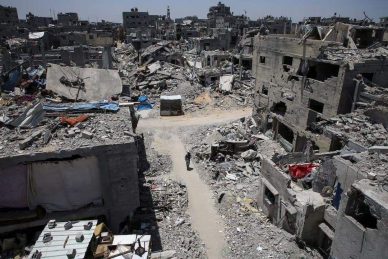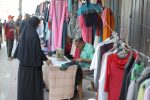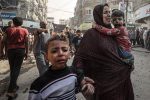GAZA, (PIC)
The specter of hunger hovers over the Gaza Strip, especially in Gaza City and its northern regions. After a limited and brief revival of the markets a few weeks ago, following the entry of quantities of food supplies, all of that has now come to an end. The Israeli occupation army has destroyed the Jabalia market and forced tens of thousands to flee, losing their meager belongings and rations.
Between the destruction caused by the occupation army and the self-imposed closure due to the lack of goods, the state of the markets and the shops that had remained steadfast has come to an end, after about 8 months of the Israeli war of extermination.
Since May 11, the occupation forces have continued to attack Jabalia and its refugee camp, and have forcibly displaced thousands of residents, while others have insisted on remaining despite the tight siege. In both cases, the residents face near-famine conditions, having lost everything and with no new aid reaching them.
Depletion of goods
The PIC correspondent reported that many shops and stalls have closed their doors to the afflicted citizens, with only a few stalls selling canned goods at exorbitant prices.
The correspondent explained that only flour is entering the Gaza City area, and in specific areas limited to some Gaza neighborhoods, but citizens are shocked by the lack of any other items. Meanwhile, northern Gaza groans under the weight of continuous starvation and bombardment.
As for the types of vegetables, fruits and meats, they have completely disappeared from the scene, as the occupation army has banned their entry for about a month, according to our correspondent.
Dirty politics
The markets have been transformed into spaces that reflect emptiness and deprivation, dominated by feelings of helplessness and anxiety, as if the streets and markets are now telling the story of a bitter struggle with the siege and restrictions that shackle every aspect of daily life.
Journalist Mohammed Al-Sawafiri said, “The famine here has reappeared, but in a more sinister and dirtier form than before, as the occupation only allows the entry of flour, without permitting the entry of various food items such as cheese, dairy, rice, sugar, semolina, salt, chickpeas, and lentils, not to mention the ban on the entry of fruits and vegetables.”
He adds in an interview with the PIC correspondent, “The famine has returned, as people find bread but cannot find anything to dip it in, except for the canned goods they had stored after the brief respite that occurred before the famine returned about a month ago.”
He continued, “In addition to the lack of all types of white and red meat, and the occupation’s continued prevention of fishermen from entering the sea, even the frozen ones that used to enter in small quantities and at exorbitant prices to the northern region are no longer allowed by the occupation to enter.”
He explained that despite all this, the prices of the limited canned goods and food items available in the markets and stalls have become like a black market every day, with prices constantly increasing and never decreasing, at a rate exceeding 500%.
UN warning
The United Nations has warned of the danger of famine in the Gaza Strip, as Israel continues to close the crossings and prevent thousands of trucks from entering the Strip.
The UN Under-Secretary-General for Humanitarian Affairs, Martin Griffiths, said that famine in northern Gaza is imminent.
He stressed that the people of Gaza are facing an untenable crisis due to the closure of the Rafah and Karem Abu Salem crossings and the lack of aid to the north of the Strip.
Edem Wosornu, Director of the Operations and Advocacy Division at the UN Office for the Coordination of Humanitarian Affairs, said in a briefing to the Security Council on May 20 that “the humanitarian situation in Gaza is becoming increasingly critical, especially in light of the ongoing Israeli ground operations in Rafah and its surroundings since May 6.”
She added that the humanitarian community has failed to find the words to describe what is happening in Gaza. She stressed that land routes are the most viable, effective and efficient way to deliver aid in the required quantities.
She added, “All available crossing points must be opened and kept open for an extended period to ensure large-scale aid entry.”
Since the Israeli occupation forces seized the city of Rafah and its border crossing on May 7, the occupation forces have stopped the entry of humanitarian aid into the Strip, and have only allowed the entry of several trucks carrying commercial goods, at a time when there is virtually no cash money in the Strip.














